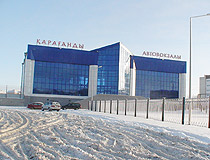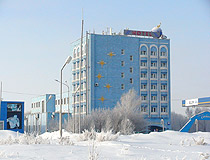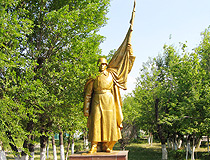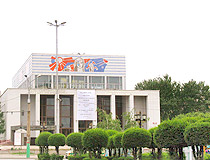Karaganda overview
Karaganda (also spelled Karagandy) is city and administrative center of Karaganda oblast (region) of Kazakhstan. Karaganda is situated at the center of important Karaganda coal basin (the word “karaganda” from Kazakh language means “black city”). Karaganda is the second largest city of Kazakhstan.
Karaganda has the population of about 457,000 (2009) on the territory of 543 sq.km.
Karaganda phone code - +7 7212; postal code - 100000.
Karaganda scenery
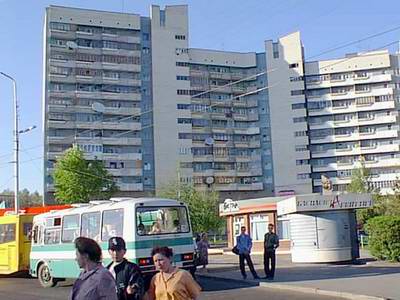
Karaganda history
The first settlement appeared in 1856, and small-scale coal mining began in 1857 to supply a nearby copper smelter. Mining ceased in Karaganda in the 1920s but expanded quickly after 1931 following completion of a railway link and a decree that Karaganda basin was to be developed as a major coal-mining area to supply industry in the Urals of Russia.
Karaganda received the status of the city in 1934 and Karaganda oblast center in 1936. By 1939 Karaganda population had swollen to 166,000. Forced labor was extensively used in Karaganda development.
Karaganda city importance increased during World War II, when the Germans occupied Donets basin and Parkhomenko coalmining machinery works was among those evacuated to Karaganda.
The present day Karaganda is one of the largest industrial cities of Kazakhstan. Also Karaganda plays important role in Kazakhstan economical and cultural life.
Karaganda streets
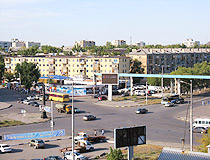
Karaganda city, Kazakhstan street
Author: Wetzel Paul

Karagandy city street
Author: Bakhtiyar Akhmetov
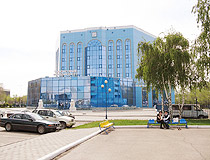
Karaganda city view
Author: Wetzel Paul
Karaganda economics
Coal mining and the production of coal-mining machinery still dominate in Karaganda industry, but there are also major iron and steel works, utilizing ore from Karazhal and Lisakovsk. In addition, there are large cement plants and also food and other light industries.
By 1972 the concentration of industry in Karaganda city had reduced water supplies in the region already semiarid and necessitated the construction of Irtysh-Karaganda Canal, dedicated in that year.
Karaganda features
Karaganda consists of several dozen settlements, but there are two main areas, the Old and New towns. Karaganda Old Town grew up in a haphazard fashion in the early years and includes more than 20 settlements.
Karaganda New Town, to the south, begun in 1934 and was designed as the cultural and administrative center of Karaganda oblast. New city has wide streets, parks and such monumental buildings as Miners’ Palace of Culture.
There are several institutions of higher education, including a university and medical and polytechnic institutes in Karaganda city of Kazakhstan. There are also a number of research and design institutes, a museum, theaters, a television center and a botanical garden in Karaganda.
Karaganda sceneries
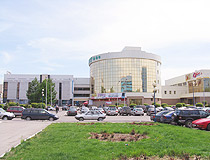
Karaganda city, Kazakhstan scenery
Author: Wetzel Paul
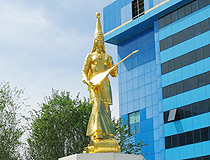
Karaganda city scenery
Author: Wetzel Paul

Karaganda city, Kazakhstan view
Author: Olga Galkina
Karaganda places of interest
On the territory of Karaganda there are about 50 monuments of history and culture: Miners’ Palace of Culture, Sports Palace named after N.Abdirov, Theater named after K.Stanislavsky and S.Seyfullin, hotel “Chaika”, a circus, stadium “Miner”, a monument of military glory “Eternal Fire”, architectural memorial in honor of soldiers - citizens of Karaganda who died in Afghanistan and others.
Karaganda regional museum of history and local study was formed in 1932. There are 3 research departments in the museum: of general history, of archeology and ethnography, of modern history and of excursions. The museum possesses 134,810 exhibits.
Karaganda museum of fine arts was opened in 1988. It possesses over 8,000 works of graphics, painting, sculptures and of applied arts.
Karaganda museum of environment is specialized in preserving and developing of environmental culture and providing the population with free access to information on environment. Interactive exhibitions in pseudo-realistic style tell about urgent environmental problems in Central Kazakhstan - about history and consequences of nuclear explosions at Semipalatinsk nuclear testing ground.
The museum pays great attention to history and problems of Baikonur launching ground as well as to local heavy industry.










